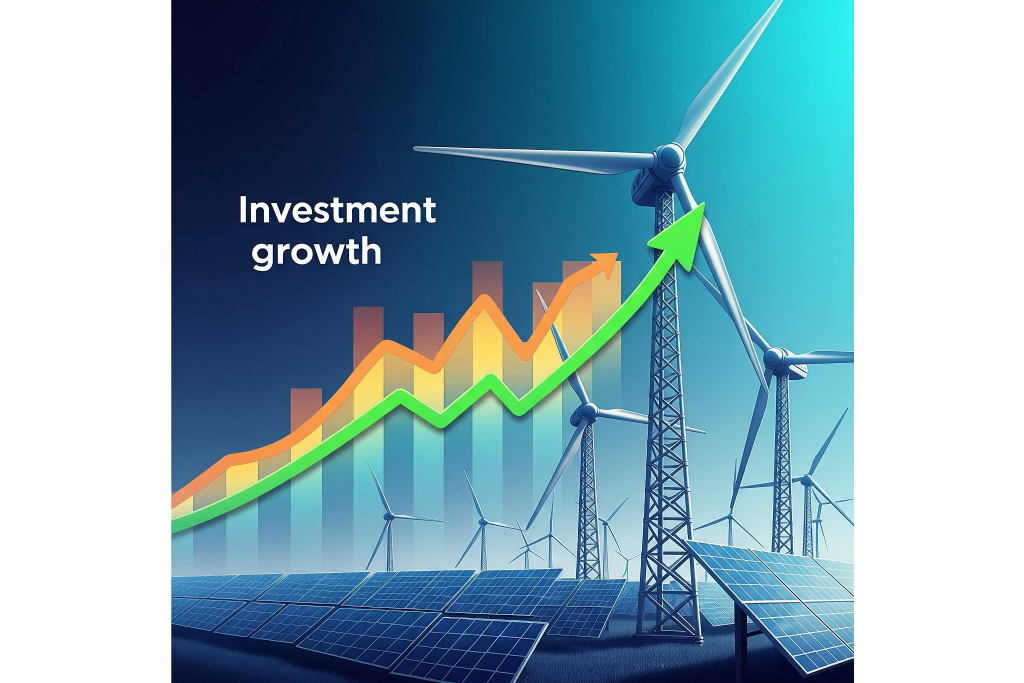Unlocking Finance for India’s Renewable Energy Growth
India is at a turning point in its energy transition process. With a pledge to reach net-zero carbon emissions by 2070, the nation is aggressively increasing its renewable energy base. Not only is the quest for sustainability an environmental imperative, but it’s also a smart economic decision that will propel long-term development. But as much as the vision for a future more green is obvious, getting there is full of financial hurdles. Having sufficient renewable energy financing available in India is a key to making that vision a reality.

The Growing Importance of Renewable Energy in India
India constitutes one of the fastest energy markets in the global market with the ever rising demand in the power generation world as a result of its rising population and industrial developments. In order to achieve this demand in a sustainable manner, the government has decided to aim high to reach 500GW of the non-fossil fuel energy capacity by 2030. Solar and wind power are at the forefront of this revolution, making the transition to clean energy an essential pillar of India’s green economy in India.
On the one hand, the policy support and technological developments are not enough to overcome barriers to financing. That would be because the large upfront capital cost of renewable energy projects and land acquisition challenges, grid connection and regulations entanglement make it imperative to access a variety of financial instruments. FDI in renewable energy in India has emerged as a crucial driver in bridging this investment gap, bringing in not only funds but also technological expertise and innovation.
The Role of Technology and Declining Costs
The fact that India is seeing a technological leap to achieve better renewable energy outcomes and that the costs of the clean energy solutions are falling drastically is one of the most heartening things about India RT environment. Technological advancements and a reduction in cost are enhancing the feasibility of RE projects enabling it to attract both domestic and foreign investors. Prices of solar photovoltaic (PV) modules, wind turbines, and battery storage systems have declined dramatically in the last ten years to the point where renewables stand a better chance at competing with fossil fuels.
The combination of this price decrease and the growing efficiency of the renewable energy systems has caused more confidence on the part of the investors. As a result, financial institutions and private equity firms are more willing to allocate capital towards renewable energy projects, reinforcing India’s progress towards a robust energy transition in India.
Financing Challenges in the Renewable Energy Sector
Despite the optimism in the outlook, the financing situation for renewable energy projects in India is not without challenges. A few of the major challenges are:
- High Upfront Capital Expenditures: Renewable energy projects demand enormous amounts of capital expenditure in the upfront stage, and hence access to low-cost finance is critical.
- Uncertainty Related to Policy and Regulations: Government policies changing at will and delayed clearances dissuade investors.
- Grid Integration Problems: Insufficiency of transmission capacity can influence smooth integration of renewable power into the national grid.
- Shortage of Long-Term Finance: Financiers cannot obtain low-interest long-term finance.
- Exchange and Interest Rate Risks: Volatility in exchange rates and fluctuations in interest rates may impact foreign investment.
These problems need a multi-pronged solution involving policy changes, risk mitigation strategies, and financial innovations.
Unlocking Finance: Solutions and Strategies
India could address these financial struggles and make sure that investments will continue to advance thanks to a multi-stakeholder approach encompassing the government, the private sector, and foreign financial organizations. Among the main solutions there are:
- Government Support and Stability of Policy: An effective investor should be in renewable energy through precise guidelines such as tax breaks, subsidies, tariffs, etc. Likewise, stability of policy is also essential.
- Green Bonds and Sustainable Financing: Green bonds have become a trend in India and enable investors to pump in cash into projects that are environment-friendly.
- Public-Private Partnerships (PPPs): PPPs may free up substantial funding of renewable projects because government agencies can collaborate with the private sector.
- Foreign Direct Investment (FDI): To boost FDI in the renewable energy sector is to promote injection of capital and new technologies to the country.
- Risk Mitigation Mechanisms: Creating risk guarantees and insurance mechanisms in place of finance can also create the solutions in preventing losses to the investors.
- Financing Model Innovation: Trying alternative financing sources like crowdfunding, peer-to- peer type of financing and blended finance may serve as a source of more funds.
The Road Ahead
The transition to renewable energy in India is not just an environmental necessity but a strategic economic opportunity. There are high chances of the industry increasing following the up thrust of the technological inventions that have reduced the cost and improvement of the financing mechanism. However, to fully unlock the potential of renewable energy financing in India, concerted efforts from policymakers, financial institutions, and industry players are essential.
With the organizing of the funding mechanism and tapping of the new mechanisms of funding, in several years India will be able to switch to a cleaner and greener energy environment. This transition will not only reduce carbon emissions but also create jobs, enhance energy security, and position India as a global leader in the green economy in India.
Frequently Asked Questions (FAQs)
Financing is crucial because renewable energy projects require significant upfront investments. Adequate funding ensures that projects are developed efficiently, integrated into the grid, and maintained over time.
Technological advancements have significantly reduced the cost of solar panels, wind turbines, and energy storage systems, making renewable energy more cost-effective and attractive to investors.
India has implemented several policies to encourage FDI in renewable energy India, including tax benefits, easier approval processes, and guarantees on power purchase agreements (PPAs).
Key mechanisms include green bonds, public-private partnerships (PPPs), foreign direct investment (FDI), risk mitigation strategies, and innovative financial instruments like crowdfunding.
Challenges include high initial capital costs, regulatory uncertainty, grid integration issues, limited access to long-term financing, and currency fluctuations.












